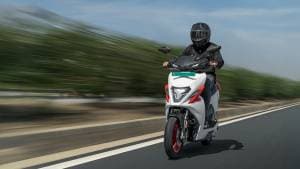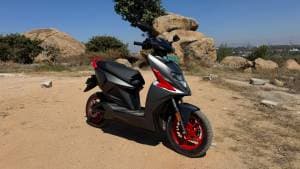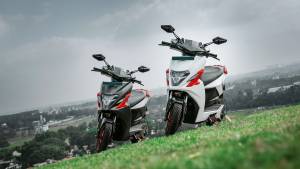Last e-scooter standing: Ather 450X vs Chetak vs Ola S1 Pro vs TVS iQube S
When it comes to e-scooters, range anxiety is an all too real problem. It's a problem that's bound to hit hard when you are looking at long distance commutes in rush hour traffic on a daily basis, park in spaces with no option to charge and have to make it back home with whatever juice you have left in the battery. So what better way to address the issue than line-up four top-drawer scooters from four of the best manufacturers the business and put them through 100km loop we plotted out through Pune, to see how they measure up, out in the real world. Time to see who will be the last ma.. e-scooter standing.
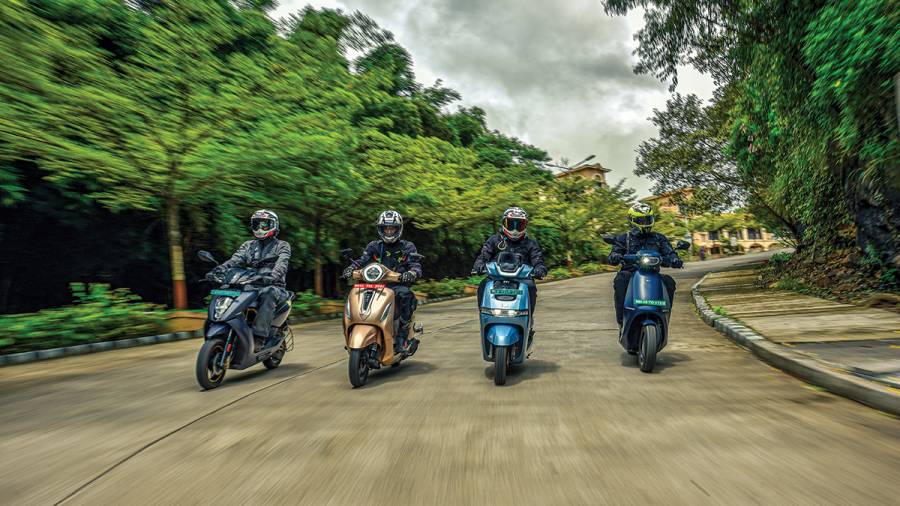
Our primary objective: to get a clear idea of the real-world range of the 450X (gen 3), the Chetak, the iQube S and the S1 Pro, and we're not going to delve too deep into aspects like the looks (because that is a subjective topic) and features too much, because, well, we've covered bits like that before in individual tests, and that's not the point here and now. Our secondary objective: to evaluate how the batteries add up to the grander scheme of things, on an individual e-scoot basis of course.
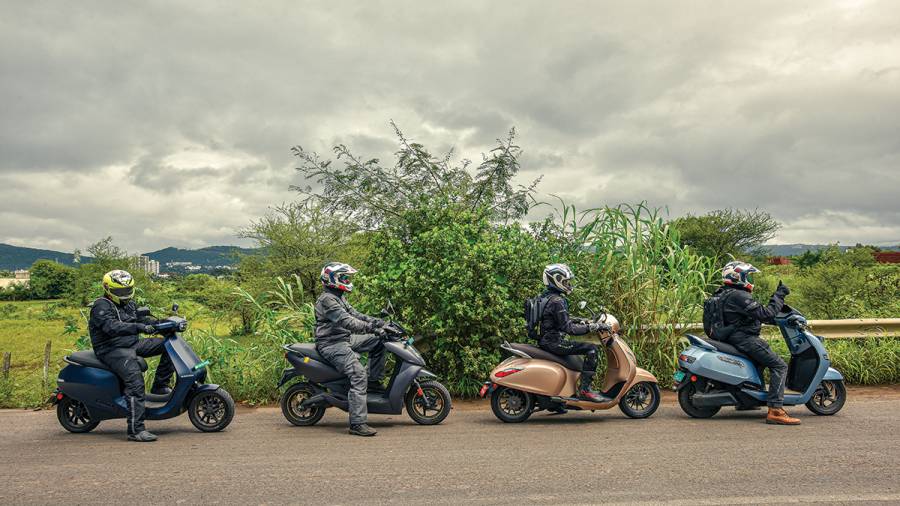
We start off the test from Rohit's building - where all scooters' batteries were topped up. The battery capacities of each scooter itself gave us some indication of each scooter's range capabilities. The Ola S1 Pro has the largest capacity with a 4kWh battery pack. The Ather 450X gen 3 houses the second biggest battery with 3.7kWh of capacity, followed by the TVS iQube S with its 3.04kWh unit, while the Chetak has the smallest 2.88kWh unit. Ola claims that its flagship S1 Pro model will run for 120km out in the real world, while Ather claims that figure to be 105km. TVS says that the iQube S is good to go for 100km, while Chetak will do a manage 95km which sounds about right considering the battery capacity. But time to put these stats to the test.

We set off going downhill and hit some winding stretches of B-roads and to get a hang of the scooters' weight and handling manners. Being well-versed with ICE scooters by now, we found the Chetak and I-Qube to be as close to petrol powered scooters as they come in terms of their weight and handling dynamics. So getting accustomed to this pair felt easy and quite natural. But when it came down to ride quality, they were separated by a fair margin. The iQube felt like the most comfortable scooter to be astride, taking on all kinds of undulations with great composure, while the Chetak had to be the least comfortable, proving skittish over undulations and ultimately quite the pain in the back, as we would find out. The 450X and the S1 Pro on the other hand were placed in the middle, in the comfort department with the Ather having the stiffer and sportier suspension setup. The S1 Pro and the 450X took a couple of minutes to get used to, but once you got down to it, both scooters exhibited good throttle response in Normal (S1 Pro) and Eco (450X) modes. Both required a lot less effort while turning into a corner and felt more rewarding when ridden with a little more enthusiasm. Roll off the throttle on the Chetak and you really feel the regen kicking in, not ideal for coasting, really, and even when you're rolling down a gentle decline, the scooter loses momentum fairly easily and you'll have to get on the throttle again, which you wouldn't have to do on the others out here, and that was, and that was a bit irritating.

The Ola, with the widest rubber is the most confident around bends and while zipping through traffic its higher power output stood out - provided that you are in any riding mode other than Eco mode. Eco mode dilutes the scooters acceleration and pace to dangerous levels out on the road, because while everyone takes off once the signal turns green, you'll be crawling along at pedestrian pace. If you happen to come across a slight incline in this mode, the scooter frustratingly loses momentum too. Normal mode is what you want to be in and it is on par with the Eco mode of all the other scooters. We found the four ride modes on the Ather to be most dependable and true to their given names. After around 30km of riding around at a leisurely pace, we took a break and were surprised to see all the scooters indicate a little over 80 per cent of charge left which kept our anxieties at bay.

Compared to motorcycles, scooters are a practical option for running errands like shopping for groceries and the like, so we figured why not pop 2kgs of veggies into each of the scooters storage bays to check out their individual storage areas. On doing so, we found the Chetak's boot to be a bit of a hit and miss - generous on paper, but shallow in practice. It managed to swallow the veggies but it didn't have much room left for anything else - and this is despite being the only one to have a glove compartment behind the apron up front and a compact charger unit. The iQube and Ather are better at space management in comparison, but the big charging units take up quite a bit of space. Ather's fast charging grid could save you the hassle of having to carry your charger around though. The Ola has the biggest under-seat storage and can easily swallow groceries and a small helmet even with the bulky charger in there.
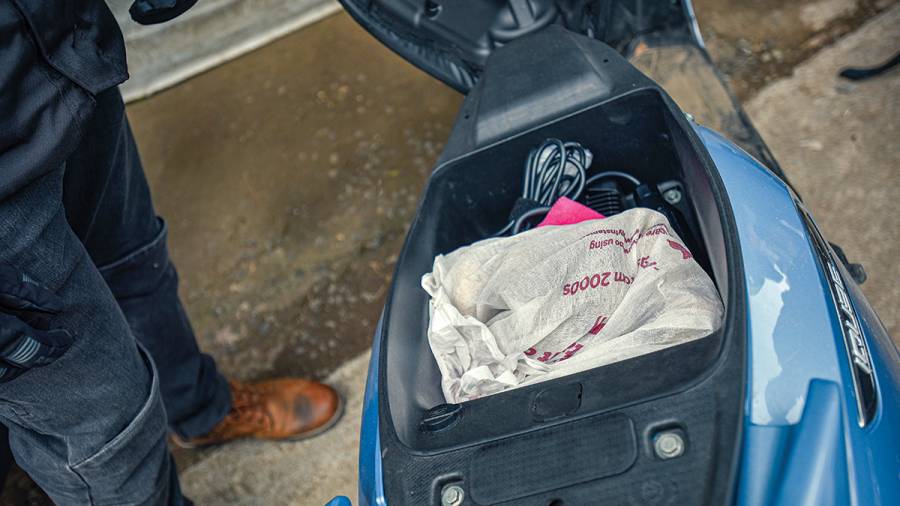
Post our acquisition of 8kgs of vegetables, we hit stretch of highway which was busy and full of traffic moving at a decent clip. So anything less than Sport mode would have been a risk of life and mechanical limb. So with enough juice in the batteries, the power modes were summoned and we even had a traffic light drag of sorts. The Ather was the quickest off the line, but cross the 60kmph mark, the Ola caught up quickly and surged ahead, making the other two scooters eat its dust. The Chetak is the least impressive when it comes to performance, and feels quite heavy, physically, compared to the others. Anyway, wringing our e-scooters' came with some consequences. Our range estimates depleted considerably, and we soon hit the office-hour bumper-to-bumper traffic jam. Back to Eco modes then.
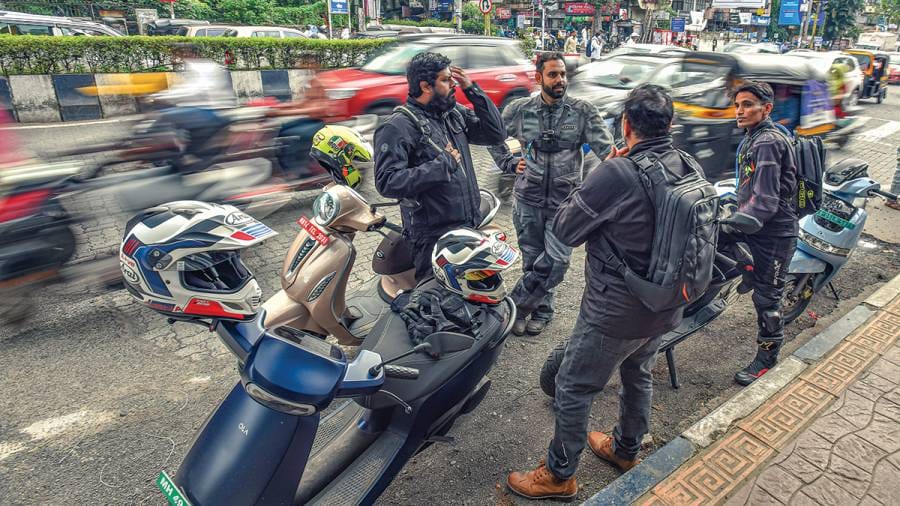
After a long day of draining some batteries, things suddenly started to come apart once the scooters batteries dipped below the 26 percent SOC (State of Charge). It was the Chetak that was the first to give in. At 25 per cent of juice left, the scooter refused to go into sport mode and at around 13 per cent, the display kept flashing signs telling me to look out for a charging socket. At 5 per cent, SOC, the scooter went into limp mode and would barely accelerate forward. The Chetak then had to be towed over the 100km finish line with some help from the locals. Just like the iQube, the S1 Pro locks in Eco mode the moment you drop below 15 percent, but with the Ola, if you're faced with a fairly steep uphill climb at this time, well, let's just say you'll need to hop off and push with the scooter giving you a little assistance in your time of woe, which thankfully wasn't the case with the TVS. It just about made it up the incline at the end and crossed the line before dying out completely. The range also appeared to drop off really quickly on Ola scooter once the battery level is low. The best part about the 450X has to be the fact that you can maintain a speed of about 35-40mph until the battery is completely drained.
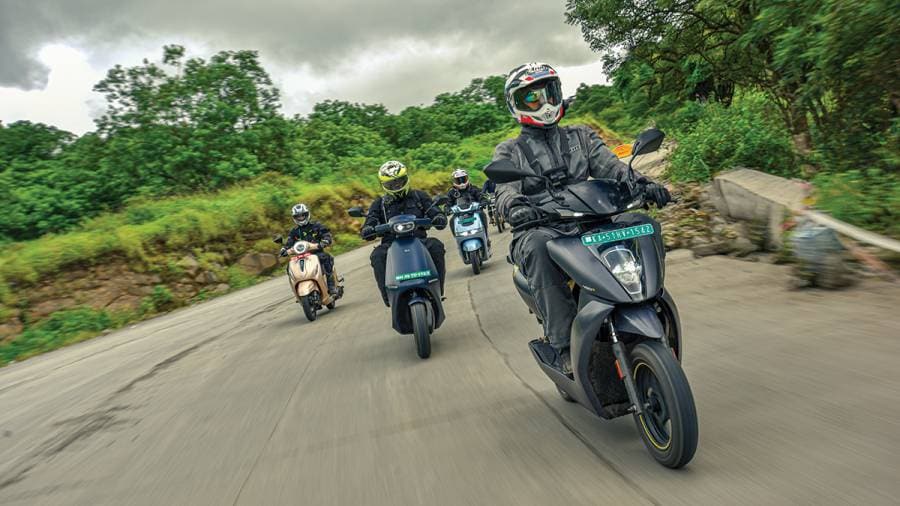
So to sum things up, the S1 Pro ticks all the right boxes on the range, features and aesthetics. The Ola is not the most expensive scooter of the four at Rs 1.52lakh (on-road, Mumbai) but comes packed with the longest list of features, and it is also the only scooter here that doesn't require a key, but a passcode to unlock and function. The cruise control feature is quite useless if you ask me and the in-built music speakers are a definite stand out. Something that I liked about it is the fact that you don't have to connect your phone to the scooter to use the navigation. It's a scooter that feels quick should you feel up to it and it can also carry you over 100km easily, provided that you don't come across a lot of steep inclines. It is the scooter that really exceeded our every expectation this time around and would be the winner if this wasn't the last ma.. scooter standing test, which strangely highlights the biggest shortcoming of this scooter it's Eco mode.
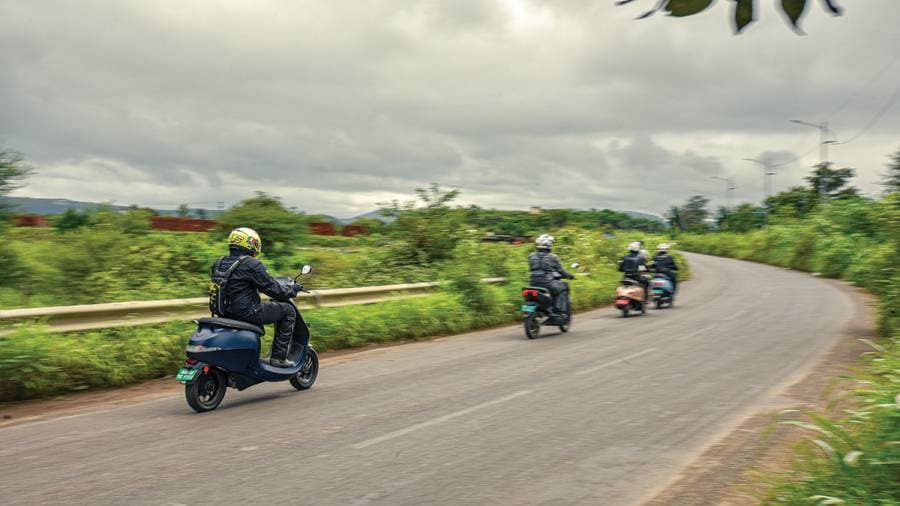
The 450X is a scooter that feels quick and is the most agile of the lot. Its screen is most intuitive and responsive too. Also the range indicated on its screen is more realistic and doesn't deceive you. At Rs 1.56 lakh, the Ather comes across as a well-put together product with a good amount of usable features and is known to be reliable over the course of time. It also happens to be the winner of the last ma.. e-scooter standing test.
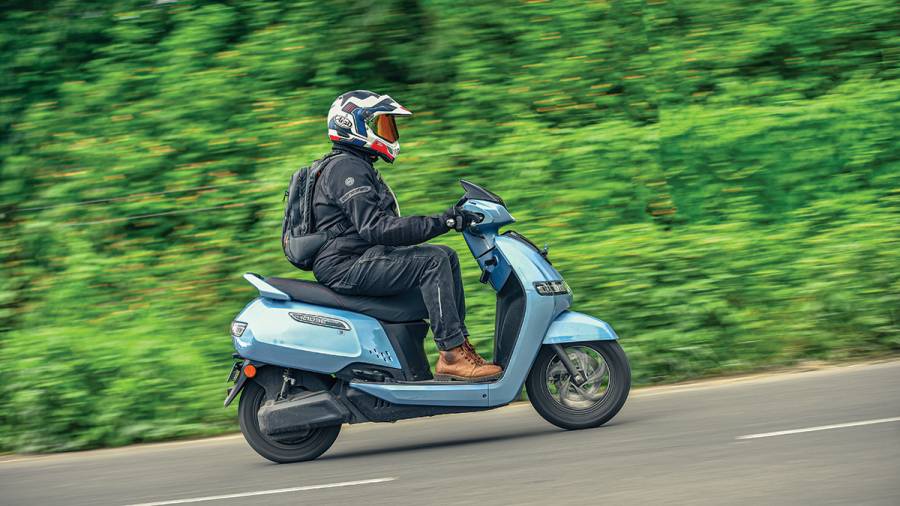
Although the iQube S' doesn't come with a hoard of features like the two e-scooters above but it all somes together quite well once you factor in the Rs 1.16 lakh price tag that comes attached with it. The TVS offers a pretty good bang for your buck in the sense. It finishes third in this comparison although it still is more than capable of taking you across the 100km finish line in real fuss-free comfort. It just seems to lacks that extraordinary feeling that the Ola and the Ather give off. There are a couple of things that I'd love to have altered with the iQube - the first would be the LED headlight, which are just plain inadequate at night, and the other would have to be the screen graphics that constantly switch to regen when you get off the throttle which is very irritating post sunset.
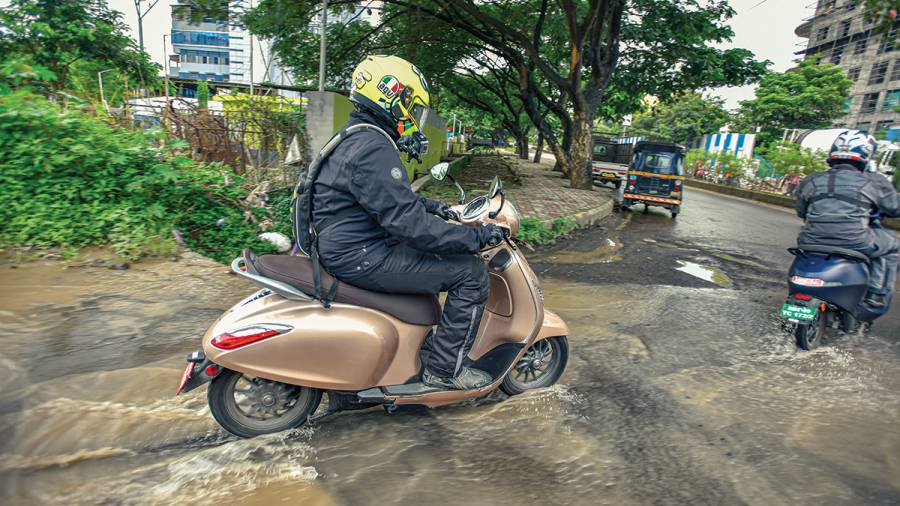
The Chetak finishes last in this test. There are some bits that really shine through, like its overall design and its build quality, which is the best from this lot. Still, it'll cost you Rs 1.47 lakh, and it comes with a rather ordinary LCD screen. It houses the smallest capacity battery and it will not take you past 100km on a single charge. Lastly, it isn't the most comfortable to be seated on. In fact, the Chetak in its current form has very little going for it apart from the promise of the Bajaj brand - which will appeal to some.
| 2022 e-Scooter Comparison | Ather 450X (gen 3) | Chetak | TVS iQube S | Ola S1 Pro | |
| Battery Size | 3.7kWh | 2.88kWh | 3.04kWh | 4kWh | |
| Motor | Permanent Magnet | Permanent Magnet | BLDC hub mounted | Permanent Magnet | |
| Max Power | 6.2kW | 4.2kW | 4.4kW | 8.5kW | |
| Max Torque | 26Nm | 20Nm | 33Nm | 58Nm | |
| Range | Company Claimed Range | 146km | 95km | 145km | 181km |
| Actual Range (Tested) Eco+Sport | 109km | 85km | 101km | 104km | |
| Actual Range in Eco (Calculated) | 121km | 91km | 110km | 121km | |
| Actual Range in Sport (Calculated) | 98km | 81km | 85km | 95km | |
| Weight | 112kg | 132kg | 119kg | 125kg | |
| Storage Space | 22 litres | 18 litres | 17 litres | 36 litres | |
| Tyres and Wheels | 90/90-R12 (f); 110/80-R12 (r) | 90/90-R12 (f); 90/90-R12 (r) | 90/90-R12 (f); 90/90-R12 (r) | 110/70-R12 (f); 110/70-R12 (r) | |
| Acceleration | 0-40 kmph | 3.4s | 4.4s | 4.4s | 3.5s |
| 0-60 kmph | 6.7s | 10.2s | 9.5s | 5.5s | |
| 30-50 kmph | 2.6s | 4.1s | 3.7s | 2.4s | |
| Braking | 60-0 kmph | 18.1m | 22.4m | 20.2m | 19.6m |
| Price (on-road, Mumbai) | Rs 1.56 lakh | Rs 1.47 lakh | Rs 1.16 lakh | Rs 1.52 lakh | |
